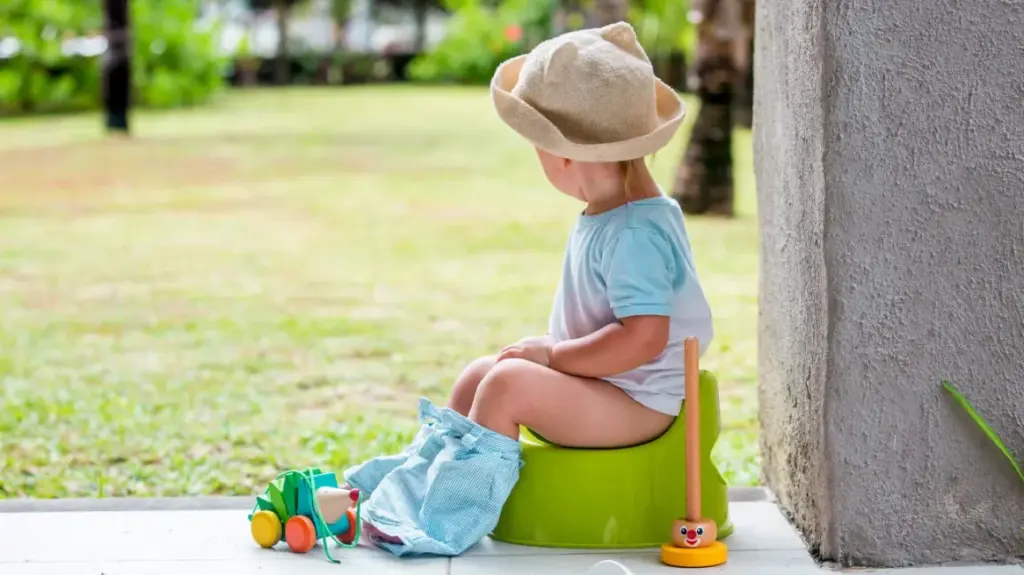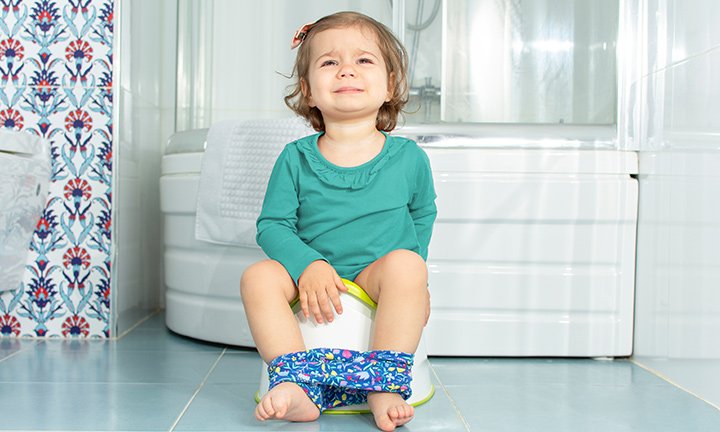Introduction to Toddler Potty Training
Potty training is a significant milestone in a toddler’s life, marking the transition from diapers to underwear. For parents, it can be a time of both excitement and anxiety. Understanding the process, knowing when to start, and how to approach it can make the journey smoother for both the child and the parent.
Importance of Potty Training
Potty training is not just about saying goodbye to diapers; it’s a step towards your child’s independence. Successfully navigating this phase helps build their confidence and promotes good hygiene habits from a young age. Moreover, it represents a critical development in their physical and emotional growth.
Ideal Age for Potty Training
While every child is different, many experts suggest that most children are ready to start potty training between 18 to 24 months. However, some children may show readiness earlier or later. The key is to observe your child’s behavior and cues.
Signs Your Toddler is Ready
Readiness signs include:
- Staying dry for extended periods
- Showing interest in bathroom habits
- Discomfort with dirty diapers
- Communicating the need to go Recognizing these signs can help you determine the right time to start potty training.
Preparing for Potty Training
Before diving into potty training, preparation is essential. Having the right tools and setting the stage can significantly affect the process.
Gathering Essential Supplies
Essential supplies include:
- A potty chair or seat
- Training pants or underwear
- Wipes and toilet paper
- Step stool
- Books or toys for encouragement
Setting Up a Potty Training Area
Create a dedicated potty area in your home. This could be in the bathroom or a designated spot in your toddler’s room. Ensure it’s comfortable and easily accessible.
Establishing a Potty Training Schedule
Consistency is crucial. Develop a routine that aligns with your child’s natural habits. Regular potty breaks, especially after meals and naps, can reinforce the training.
Choosing the Right Potty
Choosing the right potty can make the training process more appealing to your toddler.
Types of Potties: Standalone vs. Seat Reducers
- Standalone Potties: These are portable and toddler-sized, making them less intimidating.
- Seat Reducers: These fit on standard toilets, helping children transition to adult toilets more quickly.
Factors to Consider When Choosing a Potty
Consider comfort, stability, ease of cleaning, and portability. Let your child be involved in the selection process to increase their interest.
Cleaning and Maintaining the Potty
Regular cleaning is essential. Teach your child the importance of cleanliness by involving them in the cleaning process. This practice not only keeps the potty hygienic but also instills good habits.
Introducing the Concept of Potty Training
Introducing the concept of potty training in a way that your child understands is crucial.
Talking to Your Toddler About Potty Training
Use simple and positive language. Explain what potty training is and why it’s important. Use words they can easily understand.
Using Books and Videos for Introduction
Children’s books and videos on potty training can be excellent tools. They often feature characters your child can relate to, making the process less daunting.
Demonstrating Potty Use
Demonstrate how to use the potty. You can show them by example or use dolls and toys to mimic the process. Seeing others use the potty can make your child more comfortable with the idea.
Creating a Positive Potty Training Environment
A positive environment encourages your child to embrace potty training without fear or resistance.
Encouraging a Stress-Free Atmosphere
Avoid pressuring your child. Celebrate small successes and stay calm during setbacks. A stress-free atmosphere fosters a positive experience.
Using Positive Reinforcement
Praise and rewards work wonders. Sticker charts, verbal praise, or small treats can motivate your child. Positive reinforcement encourages them to keep trying.
Handling Accidents Calmly
Accidents are part of the process. Reacting calmly and reassuringly helps your child feel secure and reduces anxiety about making mistakes.
Potty Training Techniques
Different techniques can be used to suit your child’s personality and readiness.
The Three-Day Method
This intensive method involves dedicating three days to focus entirely on potty training. It requires vigilance but can yield quick results.
Child-Led Potty Training
Allowing your child to lead the process can be effective for those who show strong independence. Follow their cues and encourage them gently.
Routine-Based Potty Training
Establish a routine where potty breaks are scheduled throughout the day. Consistency helps reinforce the habit.
Gradual Transition from Diapers to Underwear
Transitioning slowly from diapers to training pants and finally to underwear can ease the process. This method helps the child adjust at their own pace.

Daytime Potty Training Strategies
Daytime training involves regular intervals and close monitoring.
Establishing Regular Potty Breaks
Schedule potty breaks every two hours and after meals. Regular breaks can prevent accidents and build a routine.
Encouraging Hydration
Ensure your child drinks enough fluids. Proper hydration helps establish a regular bathroom schedule.
Monitoring Diet for Potty Training Success
A balanced diet with fiber-rich foods can prevent constipation. Avoid excessive sugary drinks, which can lead to frequent urination.
Nighttime Potty Training
Nighttime training is often more challenging and requires patience.
Deciding When to Start Nighttime Training
Begin nighttime training when your child consistently wakes up dry in the morning. This indicates readiness.
Preparing the Bed for Nighttime Training
Use waterproof mattress covers and have spare sheets ready. Preparing the bed minimizes the inconvenience of nighttime accidents.
Tips for Reducing Nighttime Accidents
Limit fluid intake before bedtime and ensure your child uses the potty before sleeping. Gradually reduce the use of nighttime diapers as your child gains confidence.
Common Challenges and Solutions
Addressing common challenges with practical solutions can ease the process.
Dealing with Resistance to Potty Training
If your child resists, take a break and try again later. Forcing can lead to negative associations.
Addressing Constipation Issues
Ensure your child’s diet includes enough fiber and fluids. Consult a pediatrician if constipation persists.
Handling Regression and Setbacks
Regression is normal, especially during changes like starting school or a new sibling. Stay patient and supportive.
Coping with Public Potty Training
When out, know where the restrooms are. Carry a portable potty if needed. Encouraging your child to use public toilets helps them adjust.
Potty Training for Boys vs. Girls
Understanding the differences in training boys and girls can make the process smoother.
Differences in Approach
Boys and girls may have different paces and preferences. Boys might need more time transitioning from sitting to standing.
Tips for Training Boys
Teach boys to sit first and then progress to standing. Using targets can make it fun.
Tips for Training Girls
Girls may take to potty training quicker. Teach proper wiping techniques from front to back to prevent infections.
Potty Training and Child Development
Understanding your child’s development can guide your approach to potty training.
Understanding Physical Development
Recognize that bladder control develops at different rates. Patience is key.
Recognizing Emotional Readiness
Emotional readiness is as important as physical readiness. Ensure your child feels secure and supported.
Supporting Cognitive Growth
Potty training can enhance cognitive skills as children learn to recognize body signals and follow routines.
Integrating Potty Training with Daily Activities
Consistency across different settings is crucial.
Potty Training at Daycare or Preschool
Communicate with caregivers about your potty training methods. Consistency between home and daycare helps reinforce habits.
Potty Training During Travel
Plan for frequent breaks and bring portable potty supplies. Maintaining the routine helps your child adapt.
Managing Potty Training with Other Caregivers
Ensure all caregivers follow the same potty training practices. Consistent messaging supports your child’s progress.
Maintaining Hygiene During Potty Training
Teaching hygiene is a critical component of potty training.
Teaching Proper Wiping Techniques
Instruct your child on proper wiping techniques. For girls, this means wiping from front to back.
Promoting Handwashing Habits
Handwashing should be non-negotiable. Make it a fun activity by using songs or colorful soap.
Dealing with Messes
Accidents will happen. Clean up calmly and involve your child in the process to teach responsibility.
Potty Training Tools and Aids
Various tools can aid in the potty training process.
Potty Training Charts and Rewards
Visual aids like charts can motivate your child. Use stickers or stamps to track progress.
Apps and Technology for Potty Training
There are numerous apps designed to make potty training fun and interactive. They often include games and reminders.
Books and Educational Materials
Books tailored to potty training can educate and entertain. They provide a relatable context for your child.
Transitioning from Potty to Toilet
The transition from potty to toilet is a significant step.
When to Make the Switch
Switch when your child is comfortable using the potty consistently.
Steps to Transition Smoothly
Use a step stool and seat reducer to make the toilet accessible. Praise and encouragement help ease the transition.
Encouraging Independence
Encourage your child to manage bathroom tasks independently. This builds their confidence and self-reliance.
Potty Training Special Circumstances
Special circumstances may require tailored approaches.
Training Toddlers with Special Needs
Adapt techniques to suit your child’s specific needs. Seek advice from professionals if necessary.
Adjusting for Cultural Differences
Different cultures have unique practices. Adapt potty training methods to respect these differences.
Potty Training Multiples (Twins, Triplets)
Training multiples can be challenging. Coordinate schedules and encourage teamwork.

Myths and Misconceptions About Potty Training
Dispelling myths can help manage expectations.
Common Potty Training Myths
Myths like “Boys take longer than girls” can create unnecessary pressure. Understand that each child is unique.
Debunking Misconceptions
Misconceptions like “Punishment is effective” are harmful. Positive reinforcement is always better.
Expert Opinions on Potty Training
Consulting pediatricians and experts can provide reliable guidance and support.
Parental Support and Self-Care During Potty Training
Supporting yourself is as important as supporting your child.
Managing Parental Stress
Potty training can be stressful. Take breaks and practice self-care.
Finding Support Groups
Joining support groups can provide encouragement and shared experiences.
Celebrating Milestones and Successes
Celebrate each milestone. Recognizing achievements can boost both your and your child’s morale.









